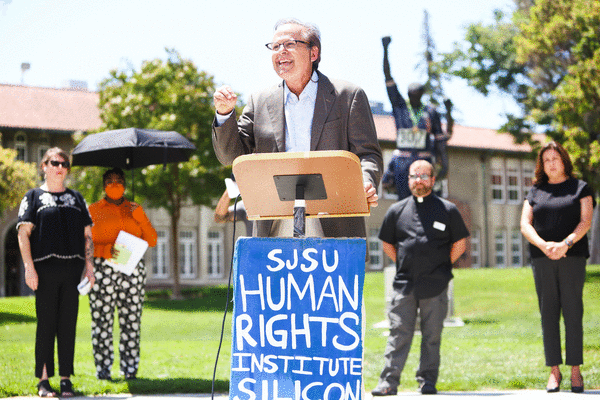8 Silicon Valley households have 6 times more wealth than bottom 500,000, rights group reports

SAN JOSE, Calif. — Silicon Valley is an embarrassment of riches for some and a struggle to get by for many who live there, but a new report puts the gap between rich and poor in the cradle of technology and innovation into stark relief: Just eight households in the region hold more wealth than the 500,000 at the other end of the earnings scale.
The Fourth Annual Silicon Valley Pain Index published Tuesday by San Jose State University’s Human Rights Institute features new data that highlights the region’s persistent earnings inequalities and the astronomical concentration of wealth into the hands of a very small number of households and companies.
“After producing the Silicon Valley Pain Index for the fourth time, we have a clear understanding of the astronomical wealth gap,” said Scott Myers-Lipton, a San Jose State sociology professor and lead author. “It is time for the community and elected officials to create social solutions to address the ‘social pain’ that is highlighted in this annual report.”
Myers-Lipton launched the Pain Index in 2020 after protests over the death of George Floyd, a Black Minneapolis man, pinned to the ground by a police officer over an alleged counterfeit $20 bill, to highlight racial injustice. Myers-Lipton said he was inspired by a similar effort after Hurricane Katrina exposed racial inequalities in the official response to the disaster.
The index is a meta-analysis of more than 60 recent studies and reports on Silicon Valley, defined as Santa Clara and San Mateo counties, published in the year since the third report in June 2022. The index presents 110 statistics laid in numbers from 0 to 1.5 trillion that show how racial minorities received less of Silicon Valley’s economic, political, educational and social rewards.
“There is a power in reading it this way,” Myers-Lipton said, “as the inequality is dramatized as the numbers increase.”
The Silicon Valley Leadership Group, which represents the valley’s leading technology companies, said in response to the index that its members support efforts to ease the societal challenges spawned by their success.
“This year’s report underscores the myriad social and economic challenges facing our region, which have only deepened in the wake of the post-pandemic economic volatility,” said SVLG CEO Ahmad Thomas. “It’s why SVLG and our member companies remain committed to a new vision of leadership for Silicon Valley — one that is focused on creating a more equitable, inclusive and sustainable future for everyone. We hope that leaders across the Valley can leverage these insights to strengthen our collective commitment to addressing these profound and systemic challenges.”
New in this year’s index are data breaking down the wealth of the region’s billionaire class, whose earnings put them in the top hundredth and thousandth of a percent. Previously, data only was available for the top 1%, a group that includes many comfortable people, but not in the same stratosphere.
The top thousandth of a percent of households in Silicon Valley own $50 billion in liquid assets or cash, which is six times more than the total wealth of the bottom half of the region, or about 500,000 households.
…continued
swipe to next page
©#YR@ MediaNews Group, Inc. Visit at mercurynews.com. Distributed by Tribune Content Agency, LLC.
